When the strength of a tooth becomes compromised as a result of excessive decay, a deep crack, or a large chip, the tooth cannot support the necessary restorations. The tooth can then be extracted or it can be saved with a porcelain crown placed by Dr. Steven Holbrook. A dental crown returns to strength, appearance, and function to the tooth.
What is a Porcelain Crown?
A porcelain crown is a dental prosthesis that fits over the entire tooth down to the gumline. It restores the original size and shape of the natural tooth, but most importantly, it returns strength and function.
Dental crowns were previously made of gold and were often referred to as “caps” for the way they fit over the top of the tooth. Those gold versions have been replaced for the most part by porcelain crowns.
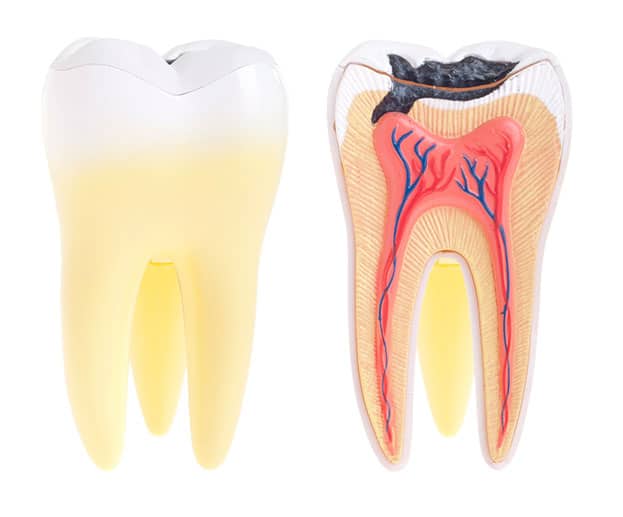
Dental crowns are fabricated in a dental lab to precisely fit over the prepared natural tooth. They are built to precisely match the shape and color of the original tooth.
Because the crowned tooth needs to be the same size as the original natural tooth, the natural tooth must be shaped on all sides and the top to make room for the crown to overlay it.
Dr. Holbrook prefers porcelain for his crowns because porcelain provides superior strength and durability. Additionally, porcelain absorbs and reflects light closely resembling natural tooth enamel.
Porcelain Crowns Before and After Photos
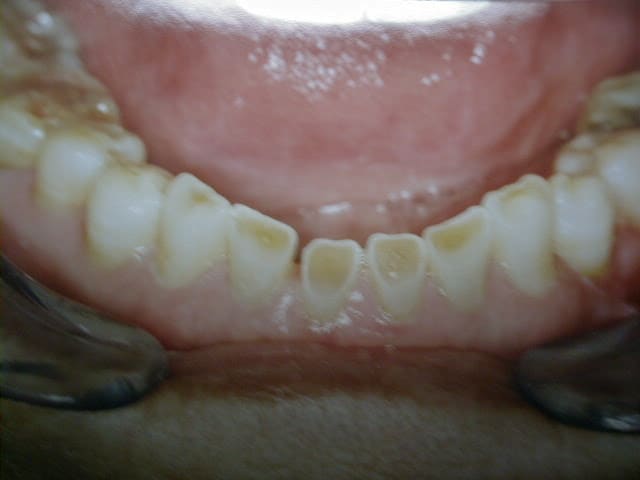
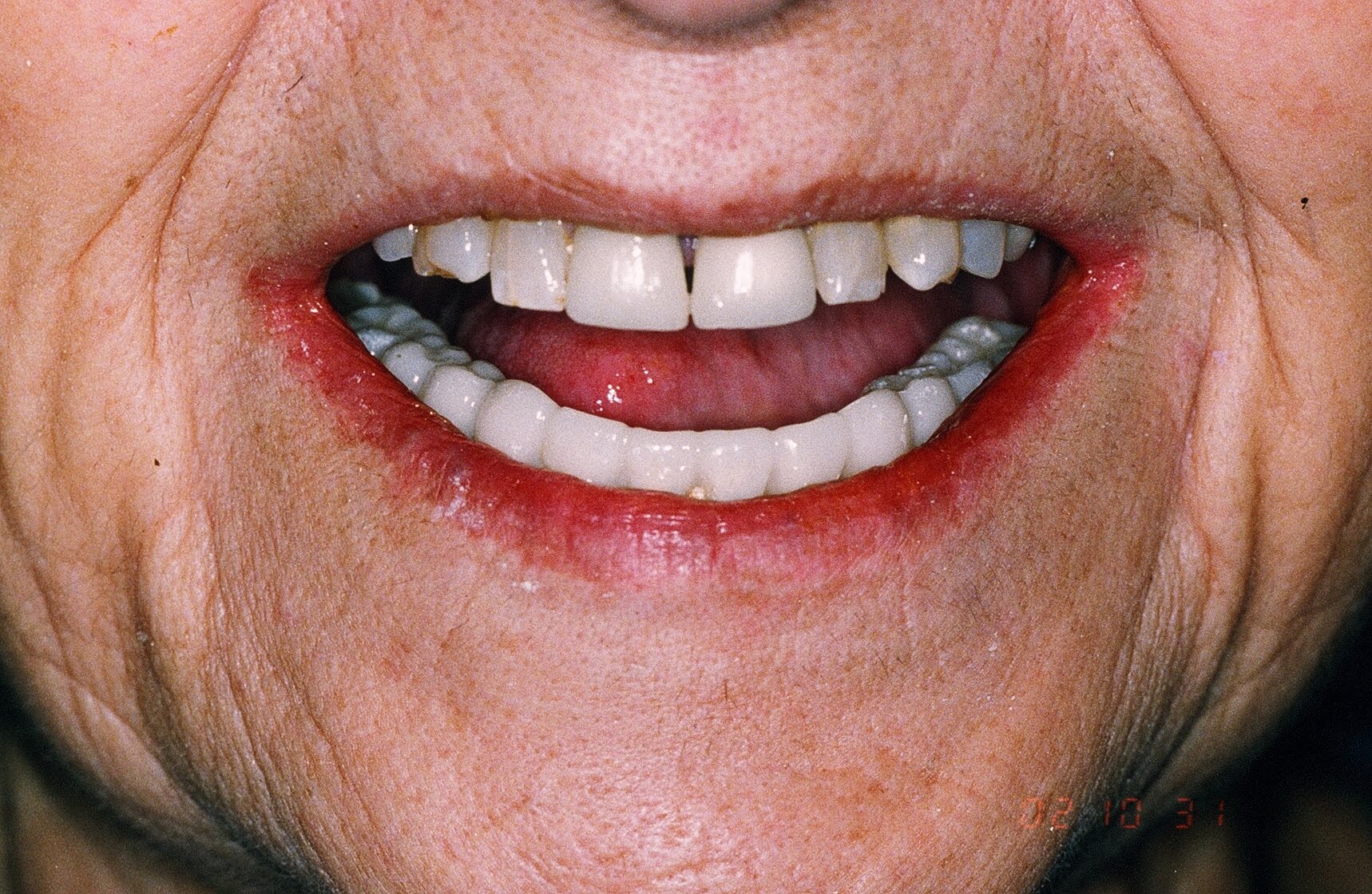
Am I a Candidate for a Dental Crown?
Dr. Holbrook places a crown on a tooth to save the tooth from extraction. The goal is to return strength and function. Crowns can also be used to cover cosmetic imperfections. Plus, they serve as anchors for dental bridges.
The following dental problems can be addressed with a porcelain crown:
- Severely decayed teeth
- Broken teeth
- Teeth with large fillings
- Severely stained teeth
- Misshapen teeth
- Teeth with fractured fillings
- Teeth that have had a root canal
- Severely worn down teeth
- Chipped teeth
What Are the Benefits of Having a Tooth Crowned?

You can think of a crown as a tooth life preserver. When a tooth has extensive decay or other damage, odds are it will need extraction because too much of the tooth’s healthy mass has been lost. A crown allows the patient to keep the natural tooth because the crown overlays the entire part of the tooth above the gumline. This returns strength to the tooth, so it can again be used as you would a healthy natural tooth. The alternative would be extracting the tooth and replacing it with a dental implant or a bridge. Crowns also make the tooth appear perfect.
They are shaped to fit the profile of the tooth the crown is replacing (i.e. incision, molar, etc.), but the tooth is perfect. Odds are the natural tooth needing the crown is anything but perfect in appearance, and surely function.
It’s always preferable to keep your natural tooth if possible. A crown with Dr. Holbrook allows you to do so, and the crown can last for decades.
The Dental Crown Procedure
It takes two appointments with Dr. Holbrook to have a crown placed on a tooth. The first appointment is all about preparing the tooth for the crown. Dr. Holbrook first removes any decay or other damage from the tooth, and the tooth is thoroughly cleaned. Next, the tooth is shaped down on all sides and on the top. This creates room for the crown to sit on the tooth and for the crowned tooth to be the same size as the original natural tooth. Once the tooth is downsized, impressions and photographs of your teeth are taken; these are sent to the dental lab for fabrication of your crown.
If you have some staining on your enamel, Dr. Holbrook may recommend whitening to return your enamel to your natural color before taking photos. This allows the lab to better match the crown color to your natural tooth color. Creating the crown usually takes about two weeks. In the meantime, Dr. Holbrook places a temporary crown onto your tooth. This protects the tooth and allows you to use it while your permanent crown is being made.
When your custom-made porcelain crown is finished, you return to Dr. Holbrook’s office. Dr. Holbrook then checks the crown for fit, function and color match with your adjacent teeth. He makes adjustments as needed. When you are both satisfied, he cements the crown onto your tooth permanently. You can then use the repaired tooth immediately. There is no recovery or waiting period.
How Do I Care For My Porcelain Crowns?

How Long Do Porcelain Crowns Last?
Porcelain crowns are incredibly durable; they can last for decades. The lifespan of your crown is directly tied to your hygiene. The crown won’t decay, but the tooth under it can if you are lax with your hygiene. Bad dental habits such as chewing ice and biting your fingernails can shorten the life of your crown.
What Is The Difference Between Porcelain Crowns And Porcelain Veneers?
The major difference between these two restorations is the amount of tooth that the porcelain covers. A crown overlays the entire visible tooth, whereas a veneer covers only a portion of the tooth. Veneers are thin porcelain shells that are placed onto teeth to mask chips, serious staining, gaps, and the like. Veneers and crowns restore strength, function, and aesthetics for teeth. Dr. Holbrook determines the optimal restoration for the tooth after evaluating the need for aesthetics, function and structural reinforcement. He prefers the most conservative treatment.
Do Porcelain Crowns Feel Like A Natural Tooth?

Are There Certain Foods I Will Not Be Able To Eat After Getting My Crown?
For the first 24 hours, you’ll need to avoid sticky, chewy foods because they can dislodge the crown. But after 24 hours, the cement is fully hardened and you can eat whatever you want. It is possible to dislodge a crown if you insist on eating really hard foods with your crown, but most people just use some common sense with their crown and food choices.
What Are the Risks of Getting a Crown?
There really aren’t any risks involved with these procedures. Sure you’ll get a small injection of local anesthesia, but those are safe. Because there aren’t any incisions made or drilling done, there isn’t really any risk of infection.
If Dr. Holbrook has to perform a root canal on the tooth prior to placing the crown, there is a slight risk that all of the infected tooth pulp won’t be removed and the infection could flare again. But Dr. Holbrook is highly skilled and experienced with these procedures. He makes sure the tooth interior is entirely disinfected prior to filling the now-empty tooth with gutta-percha and sealing it prior to placing the crown.
When shaving down the outer material of the tooth prior to placing the crown, there is a very slight risk that this will create tooth sensitivity. This is very rare because not that much tooth material is removed.
Is the Process of Getting a Crown Painful?
There is little pain with these procedures. As mentioned above, after Dr. Holbrook shaves down the tooth to prepare it for the crown, you will have some soreness for a couple of days, but this is not acute pain.
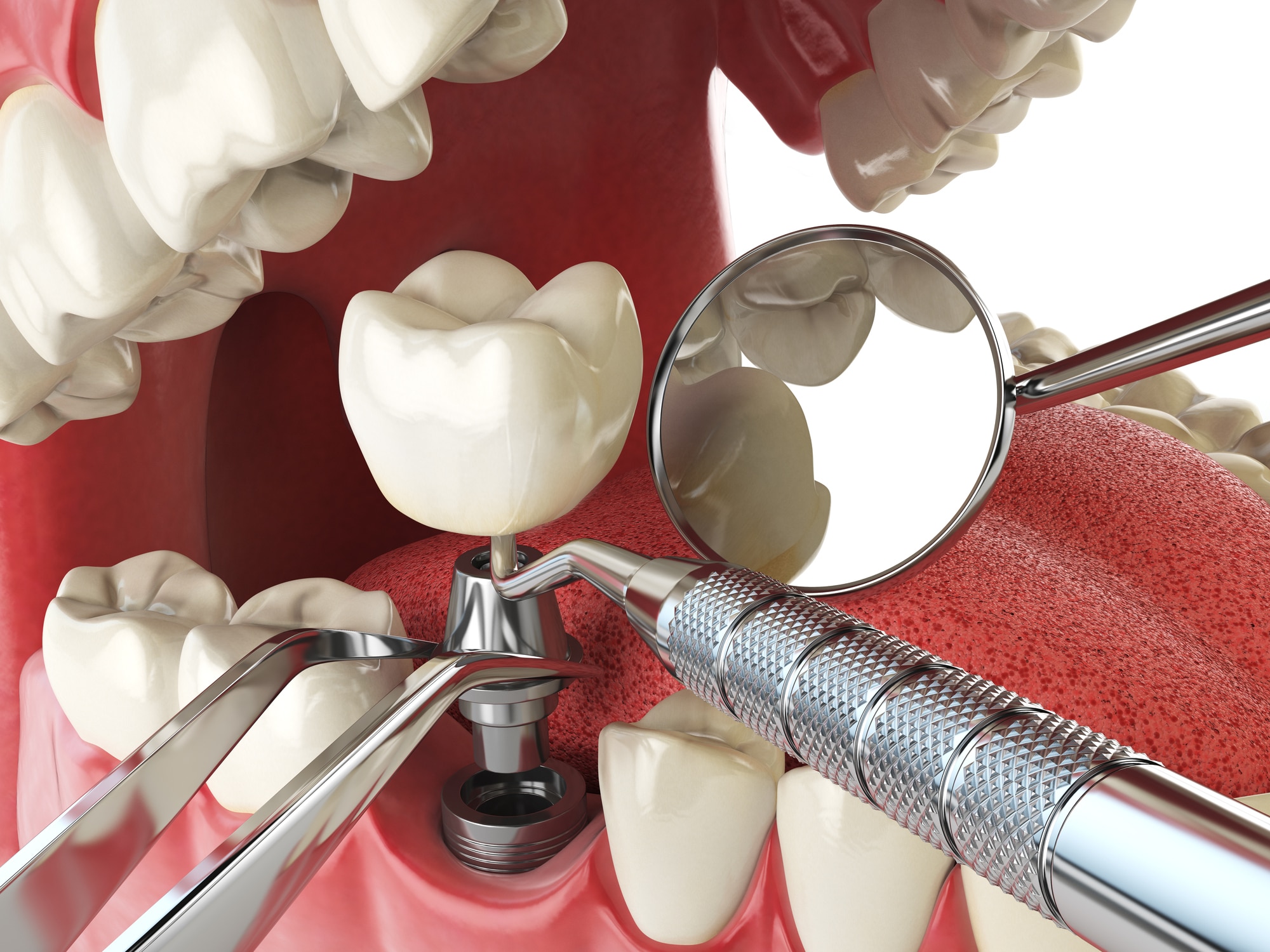
It is easily manageable with over-the-counter pain medication. Remember, there aren’t any incisions involved with placing a crown.
Can I Get a Porcelain Crown on a Front Tooth?
Yes, you can get a porcelain crown on a front tooth. It is often one of the best choices for restoring the front teeth's natural look and function. Porcelain crowns on the front teeth offer many benefits, including:
- Natural Appearance: Porcelain mimics the translucency and color of natural enamel. This makes it an excellent choice for visible teeth. The crown can be custom-shaded to blend with your surrounding teeth.
- Custom Fit: A porcelain crown is carefully crafted to match your natural tooth's size, shape, and contour. This ensures a balanced and uniform smile.
- Increased Strength for Biting: Front teeth don't endure the same chewing force as molars. However, porcelain crowns are durable enough to handle normal biting forces.
- Non-Metal Option: Porcelain crowns do not have a metal core, so there's no visible dark line near the gum line. This can occur with porcelain-fused-to-metal crowns.
How Do I Manage Tooth Sensitivity After Getting a Crown?
Tooth sensitivity after getting a crown can result from several issues, such as:
- Nerve Irritation: Preparing the tooth and placing the crown can irritate the tooth's nerve. This can cause temporary sensitivity.
- Bite Misalignment: If the crown is too high or doesn't fit well, it may cause uneven pressure and sensitivity.
- Exposed Tooth Structure: If the gum recedes, it may expose sensitive areas near the crown.
- Temperature Changes: Teeth with new crowns can be sensitive to hot or cold foods and drinks.
The good news is that there are also several steps to take to reduce sensitivity, including:
- Using a Desensitizing Toothpaste: Products like Sensodyne can block the nerve signals in the teeth to reduce sensitivity. Use it twice daily for the greatest benefit.
- Avoiding Extreme Temperatures: Stick to lukewarm foods and drinks to decrease discomfort. Avoid chewing ice or consuming very hot beverages.
- Watching Your Diet: Avoid acidic or sugary foods, which can exacerbate sensitivity. Stay away from sticky or hard foods that could put extra pressure on the crowned tooth.
- Practicing Good Oral Hygiene: Brush with a soft-bristled toothbrush to avoid aggravating the area. Floss around the crown to maintain gum health and prevent irritation.
- Using a Mouthguard (if Necessary): If you grind your teeth at night (bruxism), a custom mouthguard can protect the crown and reduce sensitivity.
- Rinsing with Warm Salt Water: Combine half a teaspoon of salt with warm water. Rinse gently to soothe irritation and keep the area clean.
- Taking Over-the-Counter Pain Relievers: Non-prescription medications like ibuprofen or acetaminophen can help with discomfort.
Why Choose Dr. Steven Holbrook?
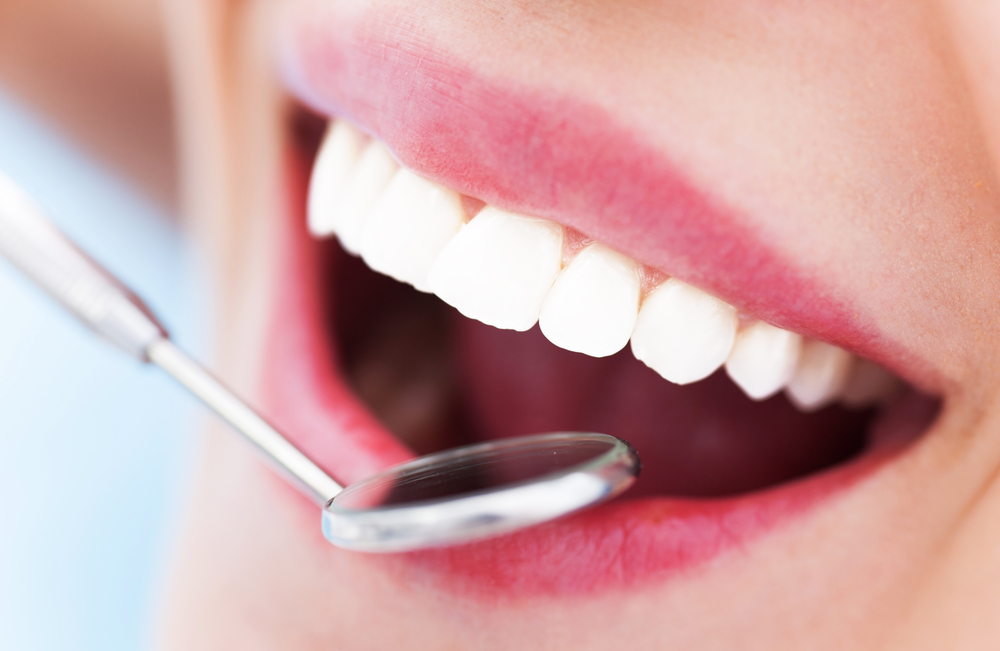
Dr. Steven Holbrook is a distinguished expert in restorative dentistry. He offers unparalleled expertise in porcelain crowns and other restorations.
As a board-certified implant dentist and Diplomate of the American Board of Oral Implantology, Dr. Holbrook combines precision with artistry to deliver exceptional results. A Master in the Academy of General Dentistry and a Fellow in both the AAID and the International Congress of Oral Implantologists, his credentials ensure top-notch care.
Dr. Holbrook has also received the AGD's Lifelong Learning and Service Recognition Award. His commitment to advanced education and patient satisfaction makes him the trusted choice for enhancing your smile with porcelain crowns.
Schedule a Consultation
To learn more about Porcelain Crowns or to schedule a consultation at our office in Albuquerque, NM, please call 505-881-1159.






